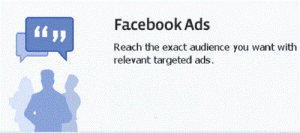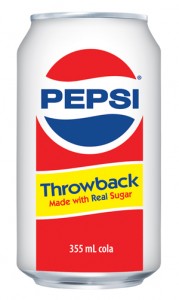by Ryan Chan ~ September 18th, 2012
As I think about how to start this reflection assignment, I realized that as I try to think of something, ideas don’t normally come instantly. I find it really hard to just sit down in a room and start thinking. Whenever I try to generate ideas for an assignment, I normally wander around my environment first and try not to think of anything. Most of the time, I talk and gather information from my peers and learn from their ideas. I find collaborating with friends very useful and effective. I realize new things i couldn’t have thought of by myself and this allows me to build up on their ideas or combine them with my own. Another useful tool is the internet, sometimes I spend time just surfing the internet observing all the random things i can find from company websites or things people share through social media. Another environment I personally enjoy reflecting upon things is the public transit. Listening to music while in the train or bus takes me away to a place where I can focus on myself and ideas come freely. My thinking process works in a way that ideas eventually come as I do things. I learn from my environment, from the things i see, the people i meet, the conversations I make and how I react to certain situations. As I gather information, I write things down on paper and reflect on each one and try to put all my ideas together. By mixing and matching ideas, I generate new, stronger ideas and solutions to tackle problems I encounter.
In Thomas Lockwood’s book, Design Thinking, he defines design thinking as, “a human centered innovation process that emphasizes observation, collaboration, fast learning, and a visualization of ideas..”. He describes it as involving consumers, designers, businesspeople and all the stake holders in an integrative product. Lockwood’s beliefs in approaching design is very interesting, in which design is to get out in the real world, where we can learn through open minded collaboration and observational research by watching, listening, discussing, and seeking to understand. We are learners and we learn from our everyday experiences, from the things we see, from other’s mistakes . Through exploration, we see different ways in approaching a problem. To me, failure is the tuition fee to succeed. When approaching a problem, we must try and fail before we realize the right thing to do to succeed in the future. There should be a plan but we should also be willing to get our hands dirty. Nothing can ever be perfected if you do not realize what is wrong.
The idea generation process can be very difficult for some. It is a task that can be very time consuming and stressful if you do not take the correct steps to approach a problem. Everybody has their own way of approaching their idea generation process that is effective to them. To me, the world is my playground, I learn from what I see. In the end, we all have our own way of approaching problems and generating ideas. We create our own personal definition of “design thinking”.
Filed under: Uncategorized | No Comments »
by Ryan Chan ~ April 7th, 2011
Last month, Patrick posted about a new technology, Word of Mouth Marketing: Going back to the traditional way, that is being promoted called Spreadable.

The video is very informative and promotes a new concept of promoting a business and targeting their market. However there are several flaws to this marketing tool. When I first read about this new technology, the first thought that came to mind is to question its effectiveness in the industry or if it will even have any potential in the marketing industry. Most of the strategies they mentioned are already existent in the industry, just like Facebook and twitter services. Also their strategy just lacks persuasiveness and does not provide a company any advantage at all. Yes, I agree that word of mouth promotion is the strongest type of marketing but word of mouth is only effective if a company fully satisfies a customer with its high quality products or excellent customer services. Spreadables service, which is spreading word of mouth through emails is not effective at all! Especially if its an electronic mail that is not even written by the owner of that account. By the end of the day people will just get tired and saturated with all these emails, just like unwanted emails. Whenever I receive emails like these, referrals from friends through email, I don’t even read them at all and just drag them straight to the spam or trash folder.. Gaining new customers through referrals is not that simple. This concept lacks credibility and will be a very ineffective marketing strategy. If the company’s way to convince customers to refer them is by rewarding them, this strategy will just be temporary and will only be effective in the short run. I really didn’t think this would last in the market, and just as I predicted Spreadables is now taking a break.
Filed under: Uncategorized | No Comments »
by Ryan Chan ~ April 6th, 2011
Kristel recently discussed in her blog, Fear Appeals -scaring you to action, about the power of fear appeals to advertising. As I read through her blog, I would say that I strongly agree to the influences of fear appeals to advertising. Every day on my way to school, I run into countless fear appeal advertising in the bus, the train, the train station. Most of which are about cigarette smoking, gambling, sex, and drugs. One particular advertisement that came to mind is a Zazoo condom commerical I saw on Youtube.

This commercial, even though inappropriate, delivers the message well and make viewers think and reflect about the future consequences of not implementing safe sex practices. Its a funny and convincing commercial at the same time. It allows viewers to picture themselves on the character’s shoes and how they would react to such situation. I would therefore agree to Kristel’s point that fear appeals are a great tool to let the audience be aware of certain issues. Despite all the debates about the effectiveness of fear appeal advertising, To design a successful and convincing fear appeal ad, it will all depend on the creativity and the effective use of exaggeration of marketers that will attract and capture the viewers’ attention.
Filed under: Uncategorized | No Comments »
by Ryan Chan ~ April 6th, 2011

I bumped into some recent news today about twitter launching a new marketing tool: Geo relevant ads. This new tool is said to enable marketers to effectively target their ads geographically, and provide advertisers more detailed user analytics that will allow them to adjust their tweets in response to their followers and find out who exactly is paying attention to their tweets. Also, even if a user listed San Francisco as his location but sends most of his tweets from Los Angeles, a Los Angeles-based company would be able to identify this user and target him on Twitter. This new tool enables advertising to perform at its maximum efficiency and target all its potential clients. This may be a ground breaking technology for marketers but as a customer, I don’t like the idea that advertisers are developing new ways to bother me.
I believe this technology will really change how people use twitter. It would surely attract a lot of advertisers but may not appeal to some users. Advertising has been evolving too fast and soon enough, people may lose their sense of privacy. The idea of targeted ads and advertisers gaining information about a customer’s profile, likes, dislikes, and even location is threatening in some ways. Majority of the public try to avoid advertising as much as possible, like when making up excuses to prevent telemarketers from wasting our time or when viewers rant about Youtube ads popping up before you can watch a video. I have nothing against advertising but its just something we need to keep in mind since Advertising is evolving and consumers are starting lose their privacy. In one of my recent posts, I discussed about Facebook’s new advertising strategy, in which they are developing a way in which they can target users in a real time basis based on keywords from their wall posts. The competition between these two social networking sites are the causes for the success and evolution of online advertising. This idea may be revolutionary for the advertising industry but they will need to understand that privacy is still vital to consumers.
Filed under: Uncategorized | No Comments »
by Ryan Chan ~ April 5th, 2011

Do you ever get bothered by those advertisements that just pop up before you can watch a video on YouTube? If so, I’m sure you have encountered the Orabrush Ad. Youtube Ads, as annoying as it is, sometimes entertains. So one day I decided to actually pay some attention to this ad; and as a marketing student, at first, i thought to myself.. “I know what this company is trying to do.. trying to trick me into buying their product! no way..” but then the ad was just too convincing! the next day i found out they are now available in Canada and can be bought at London Drugs. Then I just felt like I had to get one or I will have bad breath forever! If there is one Ad that really got into me. It would be this Orabrush Ad.
This advertisement is really convincing, it is very informative and also delivers an affective component to consumers. Their approach to exposing the problems of bad breath to the public really captures your attention. The ads approach into speaking to the viewers directly seems to be a very effective strategy to sell their product.They try to make you feel you have bad breath and make you feel bad about it. It gives this feeling of disgust as you watch it (when he sniffs the spoon) and makes you feel the need to own an Orabrush.
Filed under: Uncategorized | No Comments »
by Ryan Chan ~ April 4th, 2011

Whenever you go grocery shopping, do you ever get the feeling to just ride your grocery cart and glide through the halls? and grab your groceries on the fly? I would literally do this every time I visit the grocery store; I didn’t care if I looked immature, all I cared about was that it was fun and it made me feel pretty cool. So when I saw this video of Volkswagen, it really caught my interest. Volkswagen has revolutionized grocery shopping! Their idea is very interesting and innovative in which they attached a skateboard on the back of a grocery cart. This allowed consumers to gain a whole new shopping experience and speed life a little bit. The “Fast Lane” project was able to distribute their brand effectively as it captures consumer’s awareness. It seems that Volkswagen’s purpose was to point out to consumers that their company is highly innovative into improving the world and focusing on the idea of “fast paced living”. The idea of revolutionizing fast paced living “The Fast Lane” also captures their target segment effectively since they want consumers to associate “on the go” grocery shopping with their products as fast, efficient and practical.
Filed under: Uncategorized | No Comments »
by Ryan Chan ~ March 23rd, 2011

Facebook on March 23, 2011 has announced a new approach into advertising in which it will be able to reach its target markets efficiently. Even with all the media and the issues facebook has encountered regarding its privacy policies, Facebook is still coming up with different ways it can connect consumers with advertisers. This time, Facebook is testing a new approach in which it mines real-time conversations to target ads. The delivery model is said to being tested on 1% or 6 million of facebook users worldwide
Facebook has been delivering targeted ads based on wall posts and status updates for a while now, but never have they delivered on a real time basis. An example of how facebook will deliver their ads is such that users who update their status with “Summer is coming!!” could get ads or offers from touring companies, hotels, or vacation destinations. By simply typing in “Keywords” for specific categories will immediately turn the user a marketer’s target of interest. This is an effective approach in which facebook can expand their methods of reaching target audiences beyond the usual targeting methods such as through “likes” and interests.
Filed under: Uncategorized | No Comments »
by Ryan Chan ~ March 15th, 2011

Gap recently promoted a new website, www.gapmyprice.com, which allows consumers to name their own price for a pair of men’s khakis. This approach really stands out as it brings a completely new strategy to the market in response to the changing market demands for cheap and “good deal” products. This seems to bring a brand new experience to online shopping for customers.
Gap’s solution in satisfying the consumer surplus of the market seems effective. Not only will it maximize the company’s profits, but it will also satisfy consumers into thinking they got a good deal. This new pricing strategy allows consumers to take the haggling experience online while they shop. This pricing strategy price discriminates as it tailors its prices to each individual. Therefore, it allows the company to maximize the amount a consumer will be willing to pay.
The only downside to this marketing strategy is the nature of the product. Pants in general are one of the hardest clothing items to buy without trying on. Thus, even with a successful promotion, this would result with a lot of product returns. Although a good idea, the success of this promotion seems unpredictable.
Filed under: Uncategorized | No Comments »
by Ryan Chan ~ February 3rd, 2011

Did you grow up during the 70’s? Don’t you just wish that you would get a chance to go back in time and relive your memories? To be able to wear bell bottomed Levi’s, Lee’s and Wranglers, grow afros and sideburns, and pulling off the hippie look? Even though I belonged to the Generation Y, it would be cool to get a taste of how living in the 70’s was like.
Pepsi recently announced that they are introducing a new drink that in some way gives us a chance to see how the 70’s was like. They advertised that they are bringing back the 70’s Pepsi packaging and its original formula in Canada (made with real sugar instead of the high fructose corn syrup used in modern soft drinks) for a limited time only. Pepsi’s strategy to bring back the old 70’s packaging promotes their product well as it segments their products demographically. Pepsi is targeting the Baby Boomers and adults who grew up in the 70’s. It seems like they are also targeting the new generation by giving them this feeling of curiosity of how Pepsi tasted like back in the 70’s. I personally don’t drink a lot of soft drinks but this promotion really captures my attention and I would probably grab a can as soon as this comes out. Their promotion strategy seems to be very effective as it captures this new and exciting retro 70’s feel which excites the customers with something new. I’m really looking forward to this product and it seems like something consumers will react positively to.
Filed under: Uncategorized | No Comments »
by Ryan Chan ~ January 27th, 2011

This commercial brings back a lot of childhood memories. I will admit that Happy Meals were a big part of my childhood. I would always follow advertisements and updates about when new toys would come out. It seems that the main target audience of this commercial are mainly kids. Its interesting how Mcdonalds makes sure they capture children’s attention in this commercial. They know Children are easy to convince; and once they have captured their attention, they will leave children to do all the convincing. I remember when I was young, if I wanted something and I don’t get it, I would cry until my parents change their minds. It seems like Mcdonald’s is putting this strategy into consideration to market their products.
This commercial definitely brings a good laugh to viewers and is able to capture one’s attention. Its straight forwardness sends a clear message even if its a foreign commercial. It definitely sends a clear affective component to consumers, that buying kids’ a happy meal will make them happy or even happier. This is exemplified by the over exaggeration of the children’s appreciation for Spongebob toys. Another attitude presented in this advertisement would be the behavioral component. In which it sends a message that buying your children a happy meal will make them more energized and probably gain a more enthusiastic personality. It also has this adrenaline feel to it, the fast paced tempo of the commercial perfectly captures children’s excitement and somehow allow them to build a connection or attraction to the product. Mcdonald’s clearly sends a message that if you want your children to be happy, buy them a Happy Meal!
Filed under: Uncategorized | No Comments »








